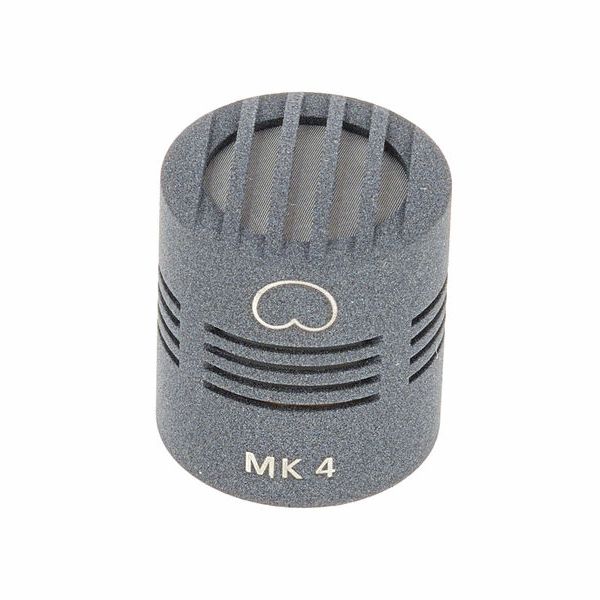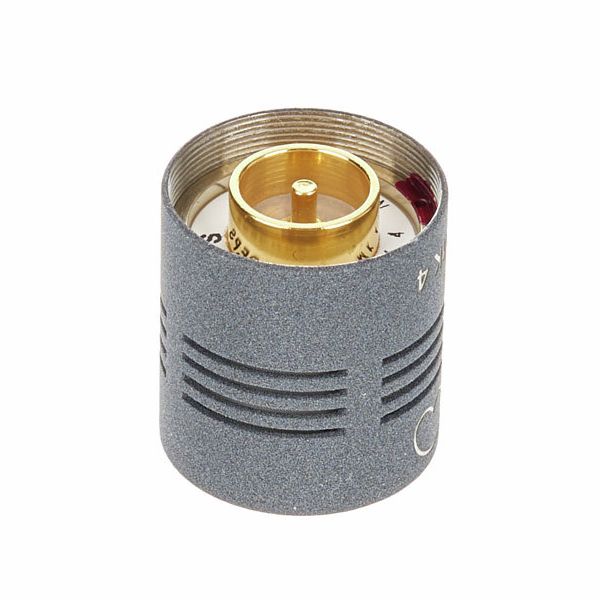Microphone Capsule
The MK 4 is optimised with regard to insensitivity to rear-incident sound. As is typical for the classic cardioid, the attenuation is 6 dB at 90° lateral incidence, up to 30 dB with incidence from the rear - depending on the frequency and the distance. Diffuse incident sound is reproduced 4.8 dB weaker than frontal, a value which corresponds to the bundling measure. The larger this is, the less "space" a microphone transmits and the lower its susceptibility to acoustic feedback.
With its polar pattern, at the same reverb balance, the MK 4 can be positioned approximately 1.7 times as far away from the sound source as a pressure receiver of the same sensitivity. Even in the diffuse sound field, i.e. at a great distance from the sound source in the room, this microphone type has a constant frequency response - except for a slight increase at 10 kHz.
The sound image is present and free from discolouration. This microphone type is equally suitable for voice and music recordings, which is why it is used in the ORTF stereo microphone (MSTC 64 Ug, or STCg). As an XY pair as well as a mid-microphone in an MS arrangement, it also delivers excellent results.
This microphone type is very versatile and is therefore used most frequently.
- Cardioid
- For speech and singing at a short distance
- For universal use
- High frequency independence of the polar pattern
- Frequency range: 40 Hz - 20 kHz
- Sensitivity: 13 mV/Pa
- Equivalent noise level: A-rated: 15 dB-A
- CCIR: 24 dB
- Noise ratio, A-weighted: 79 dB (A)
- Peak sound pressure level (at 0.5% THD): 132 dB
- Surface: Matt grey










